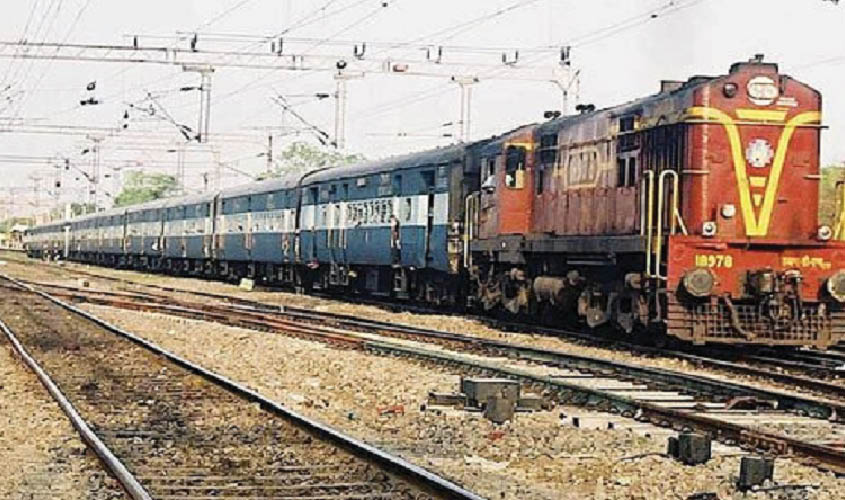Accidents keep happening, followed with media outrage and public outcry, but nothing meaningful happens to check them.
The Amritsar train mishap during the Dussehra celebrations and its aftermath have a familiar sequentiality about it: grief and anger, followed with blame game and crass politicking. It’s like watching a third-rate masala Hindi movie. After every accident and disaster, it’s the same story.
It was not a natural disaster, not “an act of God”; it was an accident waiting to happen. For about 40 years, Dussehra celebrations were held at Amritsar’s Dhobi Ghat, with thousands thronging the place to see the burning of Ravana’s effigy with fireworks. Organising such an event at the small ground with just two gates was never safe. But neither the organisers nor the authorities gave a thought to the safety aspect. Nor, it appears, was there such a thing as civil society to raise the issue with the people and the local administration.
But this is also the story of almost all public functions in India, especially in small towns and in the countryside. All of us see and know about the safety lacunae in such events; all of us ignore them. It always takes a big mishap, involving a large number of casualties, to wake us up about the dangerous manner in which an activity is carried out. Decades ago, a school bus fell into the Yamuna; after that, norms governing school buses came into being. Similarly, it was after the Uphaar tragedy in 1997 that rules were framed for fire safety in cinema halls. A few years ago, dozens of people were charred to death at a trade fair as the tent housing it did not have proper exits. And now we have Amritsar.
Three points need to be made here. First, as a people we Indians are least bothered about safety aspects. Many people don’t bat an eyelid spending millions on decorating their residences, but are extremely casual about, say, wiring. So, it didn’t just occur to the people standing on railway tracks that they could be crushed; most were busy making videos of the burning effigy and fireworks when the train came and killed them.
The organisers were equally cavalier about people standing on tracks. “Madam [former MLA Navjot Kaur Sidhu], look here. They [people] do not care about the railway tracks even as 500 trains pass by. Over 5,000 people are standing on the railway track at this moment,” a man is heard saying just before the accident. He probably equated people’s folly with their zeal.
The second point pertains to politicians’ insensitivity. Minister of State for Railways Manoj Sinha brazenly and promptly ruled out any punitive action against the driver of the train. “The incident was not Railways’ fault. There was no lapse on our part and no action against the driver will be initiated. People should refrain from organising such events near tracks in future. I think if precaution had been taken, the accident could have been averted,” he said. Blaming the victims of a gruesome mishap for it is neither polite nor politic, but the Minister is unbothered about civil niceties. We are always right—this is his motto, as of the almost entire political class.
Further, a few hours after the accident, he gave a clean chit to the driver. He even ruled out an inquiry, “What should we order an inquiry about? Trains travel in speed only.”
Then there is the Sidhu saga. Navjot Kaur Sidhu, wife of Punjab minister Navjot Singh Sidhu, was the chief guest at the Dussehra function. The Akali Dal wants the dismissal of the Sidhus from the state Cabinet on the grounds that his wife presided over an “unauthorised” event. The couple, however, is brazening it out. “Train was running at a speed of more than 100 km per hour. Some people say the top light of the train was not working. If top light was not there, you cannot get it out of the yard. If top light was working then you can see 3 km because train had a glass [window] at the front for view,” Minister Sidhu said.
The Union minister says his department, the Railways, is not responsible; the state minister says nobody except the Railways is. With allegations and counter-allegations flying, the real issue—safety around railway tracks—may be drowned first in cacophony and then buried in the inquiry committee’s report.
So, we come to the third point: governance in India is not only not proactive, it is not even adequately reactive. Accidents keep happening, so do disasters, both natural and manmade, followed with media outrage and public outcry, but nothing meaningful happens to check them, to learn from mistakes, to improve structures. Those who matter are not bothered, and public discourse remains focused on cows, the interpretation of history, and changing of names. The real issues get shrouded by the fake ones. The upshot is ubiquitous and all-engulfing banality.

